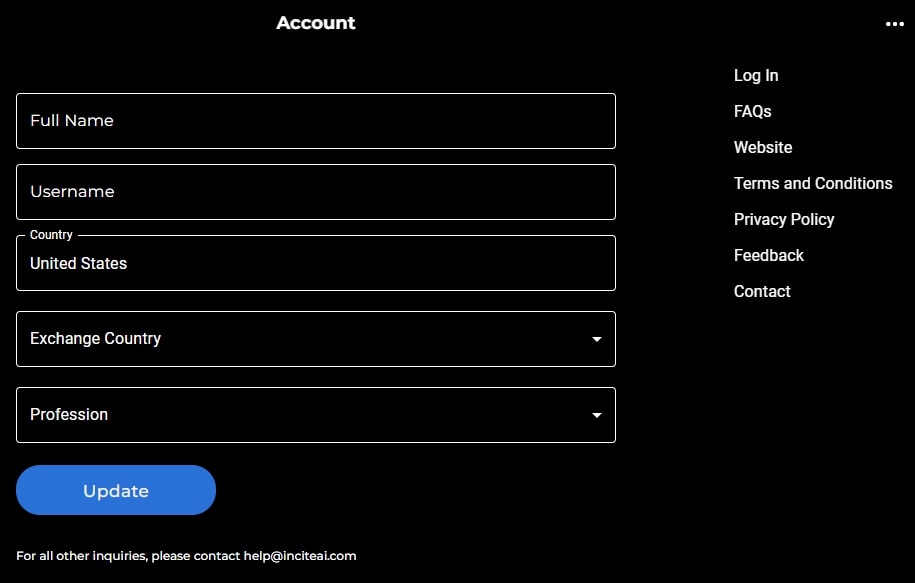20 Great Ways For Picking AI Stock Prediction Sites
20 Great Ways For Picking AI Stock Prediction Sites
Blog Article
Top 10 Tips For Evaluating The Security And Privacy Of Ai Platform For Analyzing And Predicting Trading Stocks
When using AI-based trading platforms that predict and analyze the price of stock, privacy and security are essential. These platforms usually deal with sensitive personal and financial information. Data breaches or mishandling could result in substantial financial losses as and reputational damage. Here are the 10 best ways to evaluate the security and privacy of these platforms.
1. Evaluation of Data Security
Secure transmission of data: Make sure the application uses encryption protocols that are secure (e.g. TLS/SSL) to protect data that is transmitted between your device and the servers.
Verify encryption at rest. Verify that sensitive data is encrypted on the server platform, using secure standards of encryption (e.g. AES-128).
Check for end-toend security: This is a must if you want to protect sensitive information or communications.
2. Review the authenticity methods
Two-factor authenticaiton (copyright) Check that your platform supports this so that you can add a layer of extra security.
Biometric authentication: Find out whether the platform supports biometric login methods (e.g., fingerprints or facial recognition) for mobile applications.
Password policy: You should find out if your provider has strict policies on passwords.
3. Verify Compliance
Financial regulations: Ensure the platform complies with relevant financial regulations (e.g., SEC, FINRA, MiFID II).
Data protection laws. Verify compliance with the laws governing data privacy in your area (e.g. CCPA, GDPR) if it is applicable.
Audit certifications. Find out if the platform is certified by security third-party assessments or is certified (e.g. SOC 2 and ISO 27001).
4. Review Controls for Access to Data
Role-based access - Ensure that the platform has roles-based controls (RBAC), which limits data access only to authorized users.
Permission levels - Verify that you can assign different permissions to users or members.
Activity monitoring: Determine if the platform monitors and records user activity for suspicious behavior.
5. Assess Vulnerability management
Regular updates: The platform must periodically update its software to patch any weaknesses.
Penetration test: Make sure that your system is tested regularly to identify and correct any security weaknesses.
Programs for bug bounty: Find out whether your platform offers a program that rewards external security experts who report weaknesses.
6. Evaluate Data Privacy Policies
Transparency - Review the privacy policy of the platform to better understand how data is gathered, shared and utilized.
Data minimization: Ensure that the platform collects only the data needed for its functionality.
Third-party sharing: Check whether your platform is sharing information with third parties and, if so what are the terms.
7. Secure API use should be checked
API security: Make sure that the platform's API uses secured authentication (e.g. OAuth, API Keys) and that it encrypts every data exchange.
Rate limits: Find out if there are rate limits within the API to stop brute force attacks or misuse.
Check the access logs to determine if they're being monitored and audited for compliance.
8. Evaluate Incident Response and Recovery
Plan for response to an incident The platform has a solid plan to handle data breaches and security incidents.
Notification policies: Check if the platform notifies users promptly in the event of a security breach.
Backups of data: Ensure that the platform is regularly backed up with data and that it has a disaster-recovery plan.
9. Assess the physical security measures
Data center Security: Make sure that servers are hosted within secured data centers that have physical security measures (e.g., monitoring, access control).
Redundancy: Check if the platform has redundant systems in order to guarantee data availability in case an hardware failure.
Geographic distribution: Check if data is distributed over multiple geographic locations for added resilience.
10. Test user privacy controls
Data deletion - Make sure that you can delete all personal data permanently from the platform when and when you stop using its services.
Privacy settings: Make sure the platform has privacy settings so you can control which data is available or shared.
Verify the data's anonymity for analytics and machine learning.
Bonus Tips
User reviews and reputation Read reviews and feedback from users to gauge the platform's track of security and privacy.
Trial period - Try the trial or demo version of the software to test its security features and privacy controls.
Customer Support: Ensure that the platform provides solid support for problems or issues related to security.
Use these guidelines to assess the privacy and security level of AI stock prediction/analysis trading platforms. This way your personal information and financial details are safe. A secure platform not only secures your assets, but also creates trust in their services. Follow the top rated this hyperlink about ai trade for more advice including best ai trading software, ai for stock predictions, investment ai, AI stocks, best AI stock trading bot free, investment ai, AI stock trading bot free, using ai to trade stocks, ai investing app, ai chart analysis and more.
Top 10 Tips For Evaluating The Accuracy Of Ai Trading Platforms That Predict/Analyze Stock Prices
Transparency is a key factor when evaluating AI-driven trading as well as stock prediction platforms. Transparency is important as it enables users to trust the platform, be aware of the decisions made and verify the accuracy. These are the top 10 tips to determine the level of transparency in these platforms.
1. An Explanation for AI Models that is Clear
TIP: Make sure the platform provides a thorough description of the AI and algorithm models used to predict the future.
Why? Understanding the underlying technologies can help users determine its reliability.
2. Disclosure of Data Source
Tip: Check if the platform discloses its data sources (e.g. historical stock data, social media).
The reason is that knowing the source of information ensures that the platform uses accurate and up-to-date information.
3. Performance Metrics and Backtesting Results
Tips - Search for transparent reporting regarding the performance metrics, such as accuracy rate, ROI and backtesting.
Why: This lets users verify the effectiveness of the platform and its historical performance.
4. Updates in Real Time and Notifications
Tips - Make sure to check whether there are any real-time notifications, updates, and trades on the platform.
Reason: Real-time transparency ensures that users are informed of the most critical actions.
5. Limitations and open communication
Tips: Make sure that the platform is openly discussing the limitations and risks of its predictions and trading strategies.
Why: Acknowledging limits builds confidence and allows you to make better choices.
6. Users can get access to raw data
Tip: Ensure that the users have access to the raw data that is used in AI models, or the intermediate results.
Why? Users can do their own analysis and validate predictions by accessing the data in its raw form.
7. Transparency in the way fees and charges are disclosed.
Tip: Ensure the website clearly lists all fees, subscription costs as well as any hidden charges.
Why: Transparent pricing prevents cost-insane surprises and helps build trust.
8. Regularly scheduled reporting and audits
Check to see whether there are any regular reports from the platform, or if third-party auditors verify its operations and performance.
Independent verification is important because it adds credibility to the process and assures accountability.
9. Explanability of Predictions
Tip: Assess whether the platform describes the specific ways in which recommendations or predictions are created (e.g., feature importance or decision trees).
Explainability can help users understand the logic behind AI-driven decisions.
10. User Feedback and Support Channels
TIP: Make sure that the platform provides open ways to receive feedback and assistance from users and respond transparently to their concerns.
What is the reason: Effective communications show a commitment towards transparency and user satisfaction.
Bonus Tip: Regulatory Compliance
Make sure the platform is compliant with all financial requirements. It should also disclose the status of its compliance. This will improve the transparency and credibility.
You can assess these aspects to find out if the AI stock trading and prediction system is transparent and unbiased. Then, you can make an informed decision. This will enable you to build confidence and confidence in the capabilities of the platform. Follow the best this site about stock predictor for website advice including ai in stock market, AI stock investing, stock predictor, AI stock price prediction, invest ai, best ai for stock trading, best ai for stock trading, free ai tool for stock market india, free ai tool for stock market india, ai in stock market and more.